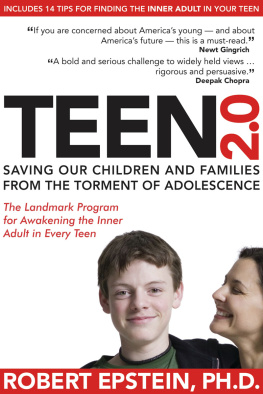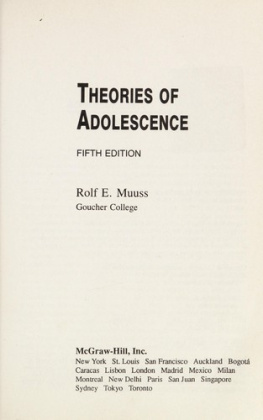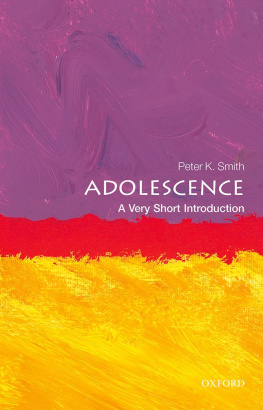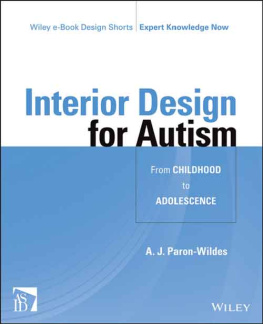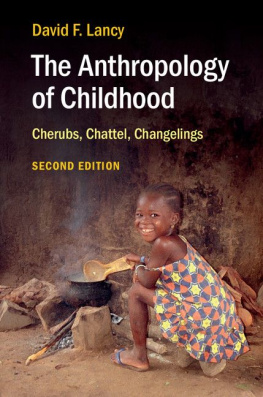First published 1964 by Transaction Publishers
Published 2017 by Routledge
2 Park Square, Milton Park, Abingdon, Oxon OX14 4RN
711 Third Avenue, New York, NY 10017, USA
Routledge is an imprint of the Taylor & Francis Group, an informa business
Copyright 1964 by Yehudi A. Cohen
All rights reserved. No part of this book may be reprinted or reproduced or utilised in any form or by any electronic, mechanical, or other means, now known or hereafter invented, including photocopying and recording, or in any information storage or retrieval system, without permission in writing from the publishers.
Notice:
Product or corporate names may be trademarks or registered trademarks, and are used only for identification and explanation without intent to infringe.
Library of Congress Catalog Number: 2010003967
Library of Congress Cataloging-in-Publication Data
Cohen, Yehudi A.
Legal systems and incest taboos : the transition from childhood to adolescence / Yehudi A. Cohen.
p. cm.
Originally published: The transition from childhood to adolescence.
Chicago : Aldine, 1964.
Includes bibliographical references and index.
ISBN 978-0-202-36367-7 (alk. paper)
1. Puberty rites. I. Title.
GN483.C56 2010
392.14dc22
2010003967
ISBN 13: 978-0-202-36367-7 (pbk)
ONE
INTRODUCTION
THE goal of this book is to learn why there are two distinct notions of liability in the legal systems of different societies; I propose to analyze this problem by an examination of the ways in which societies treat the transition from childhood to adolescence.
The relationships between the two sets of data notions of legal liability, on the one hand, and the individuals evolution from childhood to adolescence, on the other can be stated simply. The concepts of legal liability with which I shall deal the empirical question of who assumes the onus for actions committed within a particular sociological nexus are going to be used as independent criteria of the sense of personal responsibility. The specific ways in which different societies cope with the transition from childhood to adolescence will be examined because it is during this passage that a sense of responsibility, consonant with the goals of the society, is implanted in the growing child.
These questions and my answers lead into a second empirical problem: the universality of the incest taboos. The reason for including incest taboos in the present context can also be stated simply. The ways in which the incest taboos are taught constitute one of the crucial modes by which a sense of responsibility is implanted within an individual during his transition from childhood to adolescence.
Thus, legal systems, the transition from childhood to adolescence, and incest taboos will be my principal empirical concerns. My theoretical concerns are with the ways in which human biology and human social structures meet with, and affect, each other. Biology and social structure are both complex phenomena, and from each I shall select only a few elements on which to focus.
On the biological side, I will concentrate on a few biochemical and hormonal occurrences that seem to affect all people in all societies. Some of these events such as the biochemical and hormonal changes that take place at the end of childhood but before adolescence begins are well documented by medical scientists; the conjectural part of the analysis will be my theoretical extrapolations from these findings and my postulation of two stages in puberty rather than one. Moving toward the social-structural side, I shall be concerned with the psychological effects of these biochemical and hormonal changes. But these remain within the biological sphere still; the mechanisms through which psychological manifestations take place repression, projection, displacement, isolation, denial, reaction-formation, and the like are themselves part of the biological inheritance of the individual. Their behavioral and symbolic representations are, of course, cultural.
One of my basic assumptions is that universal physical changes in the human body at certain stages of development are accompanied by universal psychological effects. Variations arise as the result of a series of sociological and physical manipulations to which the individual is exposed during his transition from childhood to adolescence. These manipulations vary from one society to another, in each placing a unique stamp upon the psychological effects of the biochemical and hormonal alterations. I am attempting to say more in the latter statement than merely that each culture molds personality differently from the next: The psychological effects of the physiological changes prior to adolescence are universal predispositions, or anlagen; these predispositions take their final forms in adulthood as a result of highly specific manipulations of the individual by the society in which he lives. Since the number of these manipulations is extremely limited, as I shall show with respect to the ways in which a sense of responsibility is inculcated, the number of psychological outcomes is also extremely limited.
In examining incest taboos, I postulate a universal gene-carried need for privacy. The universal incest taboos and there are several of these, just as there are some incest taboos that are not universal are largely designed to satisfy the need for privacy, as well as other needs. There is considerable evidence in support of the postulate of a need for privacy; this evidence also shows how a limited number of social-structural relationships, in their confluence with the need for privacy, give rise to a comparable number of universal incest taboos.
On the social-structural level, I shall be dealing with sociological boundary-maintaining systems; this general subject is my principal and continuing theoretical concern. While I am not now prepared to make any general statements on the theory of boundary-maintaining systems much work remains before this can be done it may be helpful to state briefly the range of the concepts involved as they are used here.
A sociological boundary-maintaining system can be described most simply by the analogy of a balloon, which is maintained by two sets of pressures in juxtaposition. If either set of pressures is changed, the balloon will collapse or expand into disintegration. Thus, the sphere maintains a boundary and becomes a boundary-maintaining system by virtue of pressures simultaneously external and internal to it. The same thing can be said of all other boundary-maintaining systems a person, a family, a friendship, a business organization, a kin group, a community, a religion, a system of social control, and the like. Once we define the nature of the boundary and the nature of the pressures internal and external to the institution (or the person, or the community) we begin to gain insight into the dynamics of a given institution as well as various other institutions within a community.



